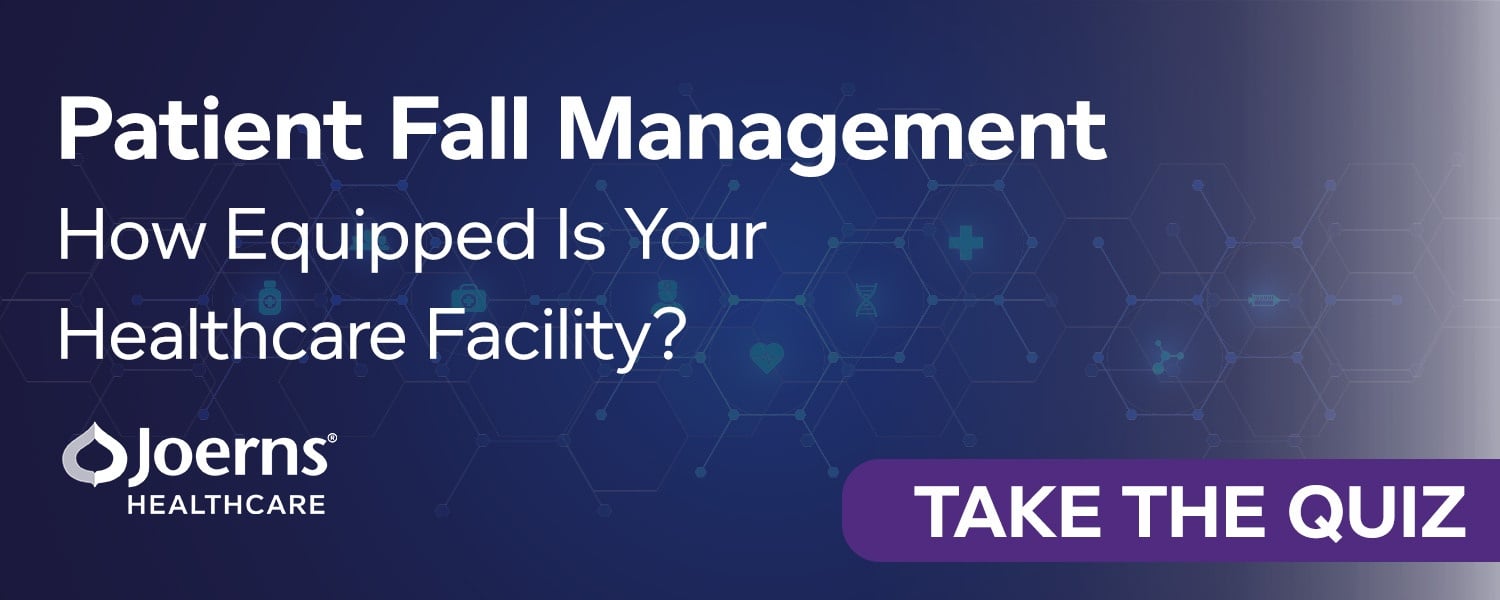Why is the five P’s of fall prevention a crucial strategy for healthcare facilities?
Falls and fall injuries in the healthcare setting are significant worries for patients, families, and hospital staff. According to the Agency for Healthcare Research and Quality, “a patient fall is an unplanned descent to the floor with or without injury to a patient.”
Patients who fall may have to stay in the facility longer or go to a rehab unit or nursing home, resulting in additional bills. Falls are the most frequently reported incident in adult inpatient units. The rate of falls ranges from 2 to 25 per 1,000 patient days, depending on the unit, with geriatric psychiatry patients having the highest risk.
Falls are associated with increased length of stay, higher rates of discharge to nursing homes, and greater healthcare utilization. A research group found operational costs for fallers with serious injuries were almost $14,000 higher than for non-fallers.
Research has shown that factors contributing to falls are multifactorial, complex, and interrelated. Falls are predominantly a problem for older people; in the US, people over 65 account for 70% of all stays. Research also shows that 30% of falls can be prevented.
Each patient is unique and may require more attention to reduce falls. Many facility hazards can increase risks:
- Equipment (SCDS, IV poles, items in room)
- New medications (cardiac medications and narcotics)
- Surgery
- Increased pain leading to weakness
- Illness/diagnosis
Fall prevention strategies must be multifactorial to combat all these hazards. An estimated 30-50% of patient falls result in some injury, varying from bruises to severe wounds or bone fractures.
“Fall prevention requires an interdisciplinary approach to care.”
– Agency for Healthcare Research and Quality
Preventing Falls: The Five P’s Of Fall Prevention
There are many elements to delivering optimal, superior patient care. Regarding patient satisfaction and experience, proactive rounding comprises the five P’s of fall prevention. You can do a lot of other things well, but poorly executed patient rounding has the potential to negate all other efforts.
The combination of hourly rounding and the five P’s are designed to meet the needs of patients and their caregivers by improving access to timely, quality, and safe healthcare.
The Five P’s Of Fall Prevention
Pain:
Are you having pain?
- Assess pain level.
- If the patient is in pain, report immediately.
Potty:
Do you need to potty/use the bathroom?
- Offer help using the toilet.
- Empty commode/urinal.
- Offer hydration and nutrition.
Periphery:
Do you have all your personal belongings within reach? Do you need me to move the phone, call light, trash can, water cup, or over-bed table?
- Engage the patient and address emotional needs.
- Ask the patient/caregiver to put on the call light if the patient wants to get out of bed.
- Check if a patient has other needs or requests (e.g., phone calls, music, lighting).
- Ask the patient, “Is there anything else I can do for you before I leave the room?”
Position:
Are you comfortable? Do you need to be repositioned?
- Help the resident get into a comfortable position.
- Turn the immobile resident to maintain skin integrity.
- Ensure support devices (e.g., orthotics, positioning devices) are in place and working.
Pump:
Are all your pumps and items in your room plugged in?
- Ensure items are placed within reach: bedside table, call light, phone, eyewear (clean and in good repair), reading material, water, TV remote, garbage, self-care, and toileting equipment.
Benefits of The Five P’s Of Fall Prevention
- Saves steps for the nursing personnel
- Promotes safety
- Increases patient satisfaction
- Improves clinical outcomes
- Decreases patient anxiety
- Builds the patient’s trust
- Provides the best possible care
- Reduces facility-acquired conditions
Numerous studies have shown that ensuring patients have access to their items, are comfortable, and have their bathroom needs met reduces fall rates by more than 50%. Many facilities implementing this approach have shown a decline in skin breakdowns and pressure injuries by more than 10%.
Overall, patient satisfaction improves by over 10%. In addition to implementing the five P’s, engagement of the patient with educational materials that explain the method to prevent falls and encourage them to ask questions and be a part of their care plan are vital parts of the five P’s of fall prevention in healthcare facilities.
Conclusion
Given falls’ destructive effects on patients and the increased burden on family members and the health care system, screening and assessment for fall risk are our principal priorities.
Healthcare teams should coordinate with patients/caregivers to provide effective multifactorial interventions to their patients by implementing the five P’s of fall prevention. Get in touch with us for more information on controlling your skilled nursing patients’ fall risk.
